A flight test campaign dedicated to the configuration chosen by Kuwait is proceeding at pace, say Eurofighter.
Leonardo ISPA 6 (Instrumented Series Production Aircraft) is the most advanced Eurofighter Typhoon test aircraft with E-SCAN radar and it recently joined the other Typhoon test aircraft after the successful completion of an important lay-up in November last year.
“The testing campaign for the new radar is particularly demanding” said Mario Mutti, Head of Project Test Pilot Fighters and Standardization of Leonardo’s Aircraft Division.
“There is a need for very large and dedicated work areas, the support of other aircraft that act as smart targets, an extremely accurate post-flight data analysis that involves multiple sites (in Italy and partner Countries) and optimizes the set-ups of the next flight. A very complex flight test system. The Italian Air Force contributes in a fundamental way: the aircraft available in support of test flights are always on time and offer a very consistent capability both quantitative and in terms of skill. The complex scenarios planned in flight are possible only thanks to the experience of the military pilots and our two-seater prototype that allows for synergy, even in the cockpit, between test pilot and flight test engineer.”
ISPA6 has completed the overall P3Eb Flight Test campaign, which represents a significant step forward to allow the delivery of the Eurofighter to the Kuwait Air Force.
“The Eurofighter is always an excellent platform – Mutti comments with satisfaction – and demonstrates its extensive development capability already foreseen in the design phase. Ergonomics are even more optimized and the new radar is perfectly integrated into a general growth of capabilities that includes sensors, weapons and increasingly advanced and performing functions”, Mutti added in a release.
ISPA 6 is one of the three EF Typhoon test aircraft equipped with the Electronic Scan Radar made by the EuroRadar Consortium, led by Leonardo UK in Edinburgh, and it’s currently allocated to the EF/NETMA P3Eb (Eurofighter Consortium/NATO Eurofighter and Tornado Management Agency – Phase 3 Enhancements Package b) development programme to perform E-SCAN Entry Into Service flight tests and provide final clearance to the Kuwait customer.
Eurofighter say that recently ISPA 6 has flown to refine ECCM (Electronic Counter-Countermeasures) Radar capabilities, while in the next months will perform final E-SCAN software release certification flights; then will progress flying to test further E-SCAN software capabilities by the end of the year.





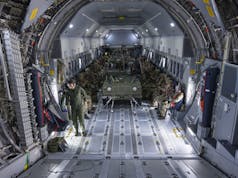
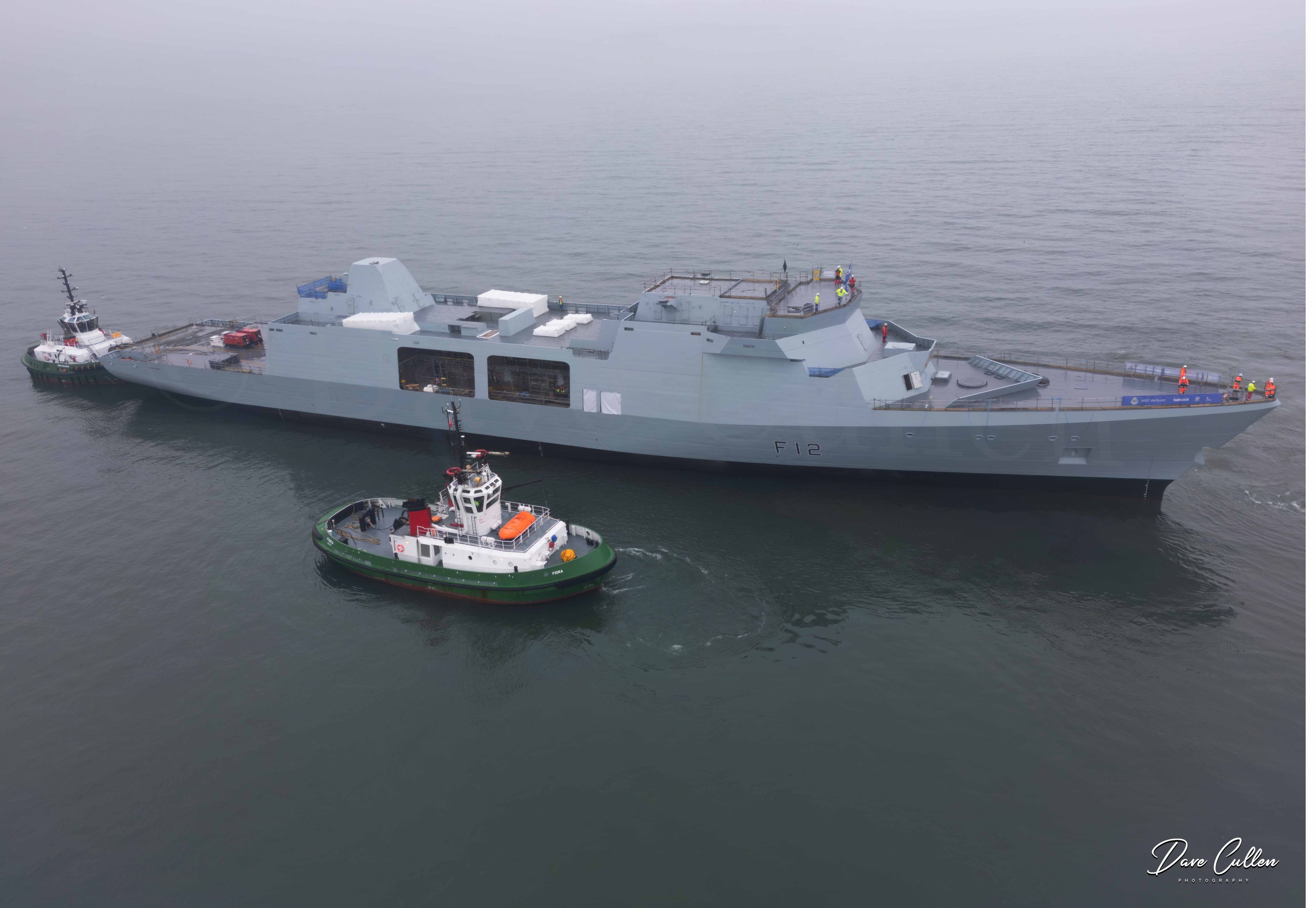
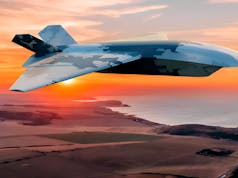

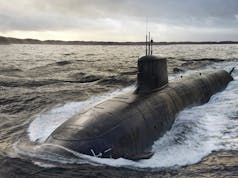
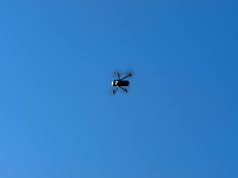
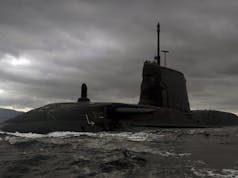

All looking good, and the current Captor radar is still a match for anything out there, so no big rush for the RAF.
I believe so Robert, the mechanical Captor is by all accounts an excellent radar, extremely reliable and offering exceptional range against small targets.
The (RAF) e scan will bring electronic attack and advanced new modes of operation to the party.
Simultaneous air/ground target tracking etc, a real game changer….
Do you know the timeline for the RAF to have e-Scan on Typhoon? I understand the RAF is getting their own e-Scan that’s different – and better – than what Kuwait or anyone else is getting.
I’m not sure about timeline, our version will have electronic attack capability ( software and hardware changes from the baseline e scan), similar to the F35.
I would hope Captor E should have capability over and above the F35, as it will have a larger antenna, with more transmit and receive modules, plus the ability to rapidly reposition the antenna via swash plate mounting. This should give it a much larger swept area than any other AESA radar.
My main issue with Captor E, is it will only be equipping our batch 3 Typhoons, it should be on our batch 2 fleet also in my opinion, with retrofit mods if required.
Hi John – thank you for the information; very helpful. How many of our Typhoon fleet are Tranche 2 and 3 – do you know? Thank you again John.
40 Tranche 3 all single seat and 67 Tranche 2, 6 of which are two seat. 24 Tranche 1 will remain in service with the rest scrapped for spares including all 16 two seat.
I know Tranche 3 have the plumbing for E-Scan but I’ve not heard any statement saying that E-Scan is limited to Tranche 3, Tranche 2 have the capability with minor modification.
My fear is that waiting for a version 2 of E-scan will be too late the Luftwaffe are going for v1+ while Kuwait will get v1. We should think of doing the same.
Good description John, should bring advantages over the F22 and F35 radars with fixed narrowfield AESA antennas, especially with field of view on the swash plate ?
It certainly should when you consider the array is 20 plus years younger than the F22 and 10 years younger than F35.
I believe some ‘very’ advanced beam forming technology is going into the transmit/receive modules on our UK spec version, to allow them to detect low observable aircraft and missiles at significant range, as well as the advanced electronic attack modes.
I think the F22 will lose its advantage to a UK
spec Captor E Typhoon equipped with meteor..
There’s a very good reason our e scan radar spec won’t be exported!
I understand there is some reluctance for the RAF to buy the current e scan as it is ‘radar 1’ standard and does not fully exploit the advantages of ESA – a result of using the old radar back end components. The RAF would like to hold out for ‘radar 2’ a more advanced and updated radar with less reliance on the old radar back end.
I think the RAF should wait and get the better radar…
Yes, were are waiting for the Plus 2 version. We could have had the same version Kuwait are getting, but experience with the F35s APG-81 showed what is now possible with an advanced AESA design. I think the RAF said make it as good as the F35s or we aren’t interested!
The timeline for E-scan is quite interesting. For instance the Raven radar (made and designed by the same companies within Euroradar) fitted to the latest version of Gripen is based on the Captor-E. It has to use a smaller antenna due to the aircraft small diameter nose. So the Gripen’s Raven should really be look on as the first development aircraft for Captor-E. The version Kuwait are getting is pretty much the same as Raven, but with a bigger sized antenna due to Typhoons greater nose diameter. The word on the street is that the Raven has some outstanding capabilities and according to the Swedes better than the Rafales RBE2. The Kuwaiti Typhoons with the larger diameter antenna will be even better (if they have the same waveform algorithms?). The antenna will allow greater output power which equals more range, but also crucially make it more reception sensitive, thus having the ability to detect targets from further away. The 2 plus version we are hoping to get will at least be on par with the APG-81, already accredited as the best fighter radar currently available.
Why the beggars belief, the MoD does not develop a variant of the E-SCAN for the Royal Navy’s frigates?
A lot of lives are at stake on those warships, you know!
Out of interest, what is wrong with the current systems in place? The T31 will have an AESA radar that is specifically optiised for maritime work (NS110), and the T26 will come with Artisan 997, which is already in use on the QE carriers and has a range out to 200 km. I believe that Artisan at least is made in the UK too.
They’re both world class, as far as I’m aware and the usual subjects (STRN etc.) don’t have a bad word to say about them. Have I missed something?
What advantage would a modified aircraft (i.e much smaller) AESA radar have over either of the above? I ask as I’m genuinely curious; radar types are not an area of expertise of mine and I would be interested to know.
Exactly. NS110 will prove to be even better than ARTISAN once in service. Both are very good (but NS110 is an AESA and ARTISAN is a PESA). And T45s have Sampson, probably as good as anything out there except the new SPY-6 on the Flight-3 DDG-51 destroyers and the new FFG(X). Besides most of these technologies are very similar. Once you have an AESA multi function radar you have the basic tool to do what you want. Everything else is down to the controlling software. Most arrays are also scalable. But naval radars often need different frequencies and power to airborne radar in fighters. They’re also very different in size for that reason. Horses for courses, but the technology is the same.
From what I heard T31 is earmarked to get the NS200 which would be even better than Artisan in range and capability.
Really? That sounds like overkill. NS200 has a 400km instrumented range! That’s the same as Sampson! Are you sure?
My concerns of Artisan 997 is that it is only a single sided panel rotating at 30 rpm, so it is blinded for every other second.
Ah, so specifically Artisan. I can understand that, single face is less than ideal.
That said it’s light, so can be mounted much higher than the AESA panels that will go on the USN’s FFG(X) and Australia’s Hunter Class (for some kind of reference, the T45 mounts it’s SAMPSON panels roughly twice as high as a Burke’s SNPY panels). Not sure how much range it provides, but even small increases in height give significant benefits in range- might mitigate the single face issue?
Yeah, that’s another reason why NS100 will be better. It also rotates at 30rpm but it scans ahead and behind the axis of rotation electronically and can have a revisit rate as high as a radar that rotates once a second for at least part of the time. This would be used to surveil areas of particular interest while still keeping a watch over other areas of sky. Also being a multiple axis radar both in azimuth and elevation, it is effectively putting more energy into any particular area of sky meaning the dwell time on target is greater as if the rotation rate was 15rpm. So effectively it’s like two radars in one. It’s an amazing piece of kit. In my view T26 should have NS100 instead of ARTISAN which will be a bit behind the curve by the time they enter service.
I see where you are going, but putting a fighter’s radar such as the Captor-E on a ship would be doing a disservice to the radar, plus you would be missing out on performance improvements. The Captor-M radar fitted to a Typhoon measures about 2.5 meters in length including the antenna. Technically it could be mounted to a Minesweeper or even something smaller. It is a frequency agile radar operating around the X-band territory. Much like Searchwater, it has multiple waveforms utilizing doppler techniques. So in theory you could operate it at sea level and it should cope with wave clutter with some tweaks.
However, because you have installed the radar system on a ship, you are no longer constrained by the limitations of the aircraft’s design, i.e. trying to squeeze a large diameter high gain antenna into a small diameter tube. Now you can, depending on the height you want to place the antenna, make it a large as possible, ala T45’s Sampson. Instead of say a 1500 transmit-receiver modules, you can double, triple if not quadruple their number. BY doing this you will significantly increase the radar range and detection performance. You can also now incorporate significantly more signal processing as weight is no longer an issue.
Technically you could base the ship’s radar on the fundamentals of the Captor-E design. This is because all radars still use the same physics to operate. It is the signal processing and software that makes the real performance difference.
The Captor-M is a very formidable radar and the new E-scan version will be a step change in performance. Radars like Artisan are designed to be operational 24/7, 365 days a year, whereas Captor is not. The aircraft does not contain enough cooling to maintain he radar for that length of operation. However, with modifications the Captor-E could be used as the basis of a ship’s radar. If the other performance enhancements were put in place, it would offer a significantly better performance than Artisan, probably on par with the Thales NS200 system.
To be honest, I wasn’t the one in favour of using Captor-E on vessels, although you make a good point about the smaller vessels like minehunters. I’d stick with a proper maritime radar system for a full size warship.
I do agree with the man who was though, that Artisan 997 may not be the best fit for T26 (unless they add a second face to it). What’s your take on the CEAFAR system that the Aussies are putting on their Hunters, compared to the NS100/200? I do remember some talk a while back about a reciprocal buy of that to grease the wheels of bilateral deals, and I’m not against it- although I guess Thales has UK content on its side.
Finally, good news!
Let’s hope we contine with some more for UK Typhoons.
An upgrade in engine power delivering an extra 15% in thrust would not go amiss either.
https://www.flightglobal.com/eurofighter-new-aerodynamics-set-for-2014-test-flight/113606.article
Hear hear. Would the weight of the engines increase or is it purely relying on design changes?
They can be fitted to existing engines I believe George.
“According to Eurojet, a Typhoon equipped with thrust vectoring nozzles (TVN) could reduce fuel burn on a typical mission by up to 5%, while increasing available thrust in supersonic cruise by up to 7%. Typhoon is already capable of performing ‘super-cruise’ (flying supersonically without afterburner) and the proposed modification will further increase this capability.”
https://defense-update.com/20110209_typhoon_tvn.html
Yes I read that a while back. But my question was regarding increase in dry/wet thrust. Do you have any knowledge of any such plans?
I wonder when we will see an upgrade of the EJ-200 engine? Apparently the aim is to increase the dry thrust to 16,500lbf and reheat to 27,000lbf. That would be mighty impressive if the weight were to stay the same.
Eurojet have stated that the EJ200 has a 20% growth margin. This can be achieved by software changes to the engine’s ECU, cold end and hot end improvements and a change to the combustion chamber design. This can all be achieved using the existing engine tube, so the increase in weight would be negligible.
The development of the EJ200, the EJ-XX (230) will be a totally different beast, with an expected larger diameter. It will also be a variable cycle engine that can adapt the by-pass air flow, turning it from a low by-pass gas turbine to a turbojet, to possibly a ramjet. It will also be able to control the by-pass air flow so it enters various stages within the engine helping performance. Rolls Royce have experience of this type of technology already through their partnership with General Electric on the F35s F136 alternative engine. So expect good things from the next generation of engines earmarked for Tempest.
Sounds great. Lord knows RR have the money, expertise and backing to get that kind of upgrade done. I just want to know when these upgrades will come online? It would be good to see a high thrust-to-weight ratio for the Tempest.
Beneath the bones of this ‘continuing story’ lie some rather sour facts about the compromises – always political – working with obdurate ‘partners’ brings.
It’s thanks to the obdurate partners that we have a Typhoon programme at all! We couldn’t have afforded it on our own.
E.A.P. flew in 1986. The Germans reneged on building the second experimental prototype. After the Fall of the Berlin Wall and German Re-Unification the Germans wished to cancel the project and had to be held to their contracts after many wrangles and industrial bribes. British proposals for an advanced radar built in Edinburgh were blocked by Germany who wished to build and American system on license; this has sunk some foreign orders. Despite foot dragging all the way they have gained twin German based companies for both airframe and engine with German M.D.’s. That is just for starters. You can research the rest yourself. Had Britain gone ahead on its own sales would have been forthcoming – just a lot earlier.
I can think of no ‘European’ project that went well or did not end up with the U.K. surrendering world beating I.P., jobs or worse, even more cash extending the industrial prospects of commercial rivals.
Correct me if I’m wrong, but Meteor and Brimstone have both been quite successful? I’ll agree our aircraft and vessel collaborations have been rather less so.
Having said that, the French had some excellent points with regards to what should have been on EAP/Typhoon- focus from the start as a multirole platform would have been a huge benefit to international sales and I think worth the added cost of accepting carrier capability. I know they wanted to be lead designers etc. but bear in mind British industry hadn’t designed a sovereign frontline combat aircraft since Harrier. Once again, our own government’s moves (or lack thereof) to support British industry prior to and during EAP basically killed off that capacity; while it was most certainly protectionist, I can also understand French frustration at British hubris regarding wanting to take the lead- when Dassault was consistently pushing out internationally sold supersonic combat aircraft designs.
I stumbled across this piece that provides a bit of a take on the decline of the aircraft industry in the UK, not a topic that I was hugely familiar with before and an interesting read: https://www.aerosociety.com/news/30-years-of-hurt-is-uk-combat-aircraft-design-coming-home/
Thank you. Brimstone is essentially an American missile with a U.K. seeker. But you make my point for me: The French ‘went it alone’ and no one accused them of being ‘anti-Communautaire’, obviously. The Germans delayed Typhoon – a name they regarded as an insult if you remember? – and cut their own order by around 45 per cent or so but insisted on holding to to their industrial share. They opposed a British advanced radar from the one country outside the U.S. capable of making such technology, preferring to buy in an American design; the price of keeping them happy was selling the U.K.’s cutting edge defence electronics to France and Italy. As I said the British designed and built E.A.P. flew in 1986. The R.A.F. received its first production aircraft twenty years later. This marque are now considered obsolete.
The story is all there in the record. My own view is a British Typhoon would have been a better aircraft sooner and I firmly believe would have had foreign sales potential. Most importantly, it would have demonstrated British industry was up to designing and building advanced technology, a signal to the world.
At present we often limp along behind thrusting Europe like some dithering old relative – but I rather think that was the Whitehall plan all along. Still is.
Well, Meteor seems to be a pretty good Euro collaboration, and FC/ASW seems to be rumbling along fairly nicely- but I do take your point as a general rule. From the little I’ve read, I’d agree that it was as much a political driver as anything else- the only way to be competitive with the US was to go with wider European partnership. But I think they mis-judged that; as you rightly say, France have been able to happily walk both sides of the line without any significant problems and I think we should have too. It is unfortunately UK government’s willingness to leave the regions and their industries to rot on the vine and just make sure the financial services sector is ticking along nicely.
It may have been a better aircraft sooner, but how many of those bad boys exactly do you think we’d realistically get for the money?
Our original order was for 232 Typhoons. We fulfilled that order but immediately sold 72 of them to Saudi, giving us 160, of which we have around 140 currently as we have scrapped several for spare parts. Pretty awful considering our oldest Typhoons are only around 13 years old!
Being unable to go it alone is a result of constant defence cuts, as well as the increasing costs of Gen 4.5 and above aircraft. The only way to get the prices down is to build more, economies of scale. That’s what’s worked for F35, the A version is now cheaper than a Typhoon!
Take Tempest for example: if we can build around 700 or more of them then the cost per airframe will be much lower. Best chance of that is to appeal to the export market – outside of Sweden and Italy, who will be partners on the project – we should be looking to Canada, as they’ve rejected f35. Also potentially Saudi, again, to replace the Typhoons in around 20 years or so.
Your chronology is off. E.A.P. flew in 1986 long before F35. You also have not appreciated the impact of successive political decisions on defence and folded into the timeline most recently the Cameron-Clegg-Osborne decision to cut defence spending and its impact on industry in the U.K. My point is that these European projects are horribly corrupt expensive, slow (and thereby more not less expensive) and essentially a signal to the rest of the world we are not up to the mark. I think we are. You do not. That is the gulf between us.
You mistake me. I do think we are up to it, if we were to properly invest in our armed forces. But as I said, the reality is that we need to either join other partners to share the cost, or, if we were to go it alone, to create something that is also going to generate exports, or else we end up with a plane we only have 100 of instead of twice that.
The Americans had the same issue with F22 Raptor.
A British Typhoon may have become operational sooner, but it would not be a better aircraft – why should it? The British requirement focused on a less sophisticated multirole-fighter (early designs therefore “replicated” the F/A-18), which the US offered to Germany at much lower costs (Northrop offered the YF-17 as the basic design for a german-build new fighter). Without European collaboration, the EAP would not have existed (the way it did). And many of the technologies developed for the Eurofighter wouldn’t either. Germany did not finance a second EAP prototype because of their involvement in the X-31-Programme, which led to the advanced control systems of the Typhoon. And so on.
European Programs are a mess, too many opinions, too many demands, everybody feels outsmarted, and of course, each system would be cheaper if only the requirements of one country alone would be considered – but you just wouldn’t get the quantities and the quality. So there wouldn’t be a financeable project at all. European Navies are a perfect showcase what would happen.
Nice to see the British Typhoons finally getting an AESA radar in their fighters. About damn time!
This post on Janes Defence in relation to tracking hypersonic weapons is interesting, I wonder if we’re working on this too?
“Radar developers adapt for tracking hypersonic-speed threats”
https://www.janes.com/defence-news/news-detail/2ab93f18-77a9-4527-94f3-f37af6266411
Sorry, but the person who wrote that piece needs shooting. The rationale behind it is fundamentally flawed. They have basically said today’s radar will not be able to detect let alone track a hypersonic missile, which is BS. Unless the laws of physics have changed for hypersonic missiles, a radar “wave” will always travel faster than it (speed of light in air > Mach 10). So the time the pulse is transmitted to the time it is received, is still leagues ahead of the time it takes the missile to travel 1km say.
The issue is not the radars, it is the predictive tracking systems that mechanically scanned radars use. These predict the track path of the missile once it’s identified and the radar has swept past the target and the missile flies through the blind spot. However, the moving target algorthim sound track the speed of the target and predict where its going until the next sweep. The other issue would be the proximity fusing in an anti-missile missile. If the missile is not a hit to kill missile like Aster, it has to rely on being in close proximity to the missile before detonating. If the incoming missile is going at hypersonic speeds then the fusing must be timed right so it flies into the debris cloud and not past it. With a flat panel AESA radar, you can continuously illuminate a target, so there’s no issues with predictive tracking.
Well for Typhoon to operate where there are modern SAM systems, it probably needs that electronic warfare pod that SAAB is developing for the Gripen. They say it is also suitable for the Eurofighter.